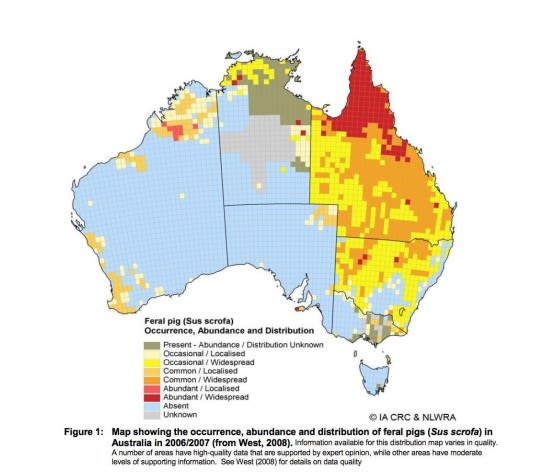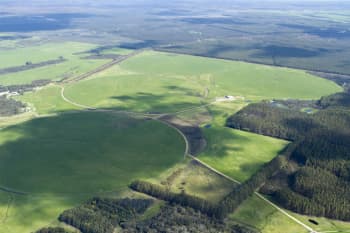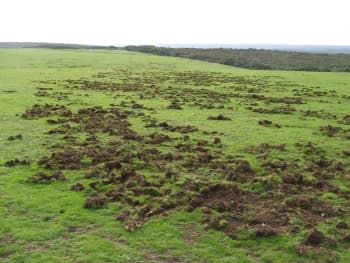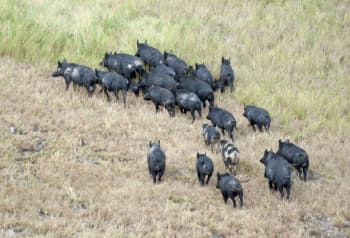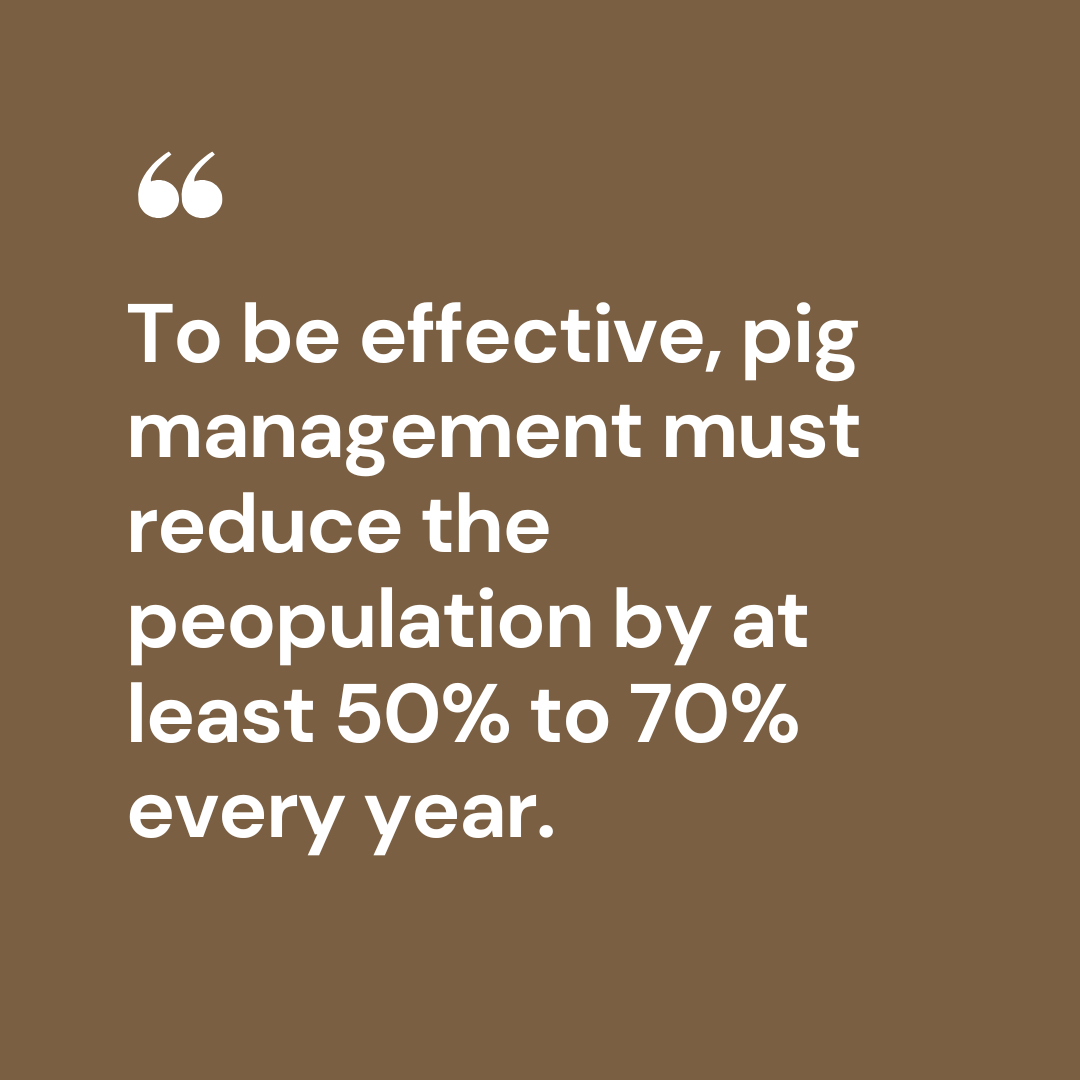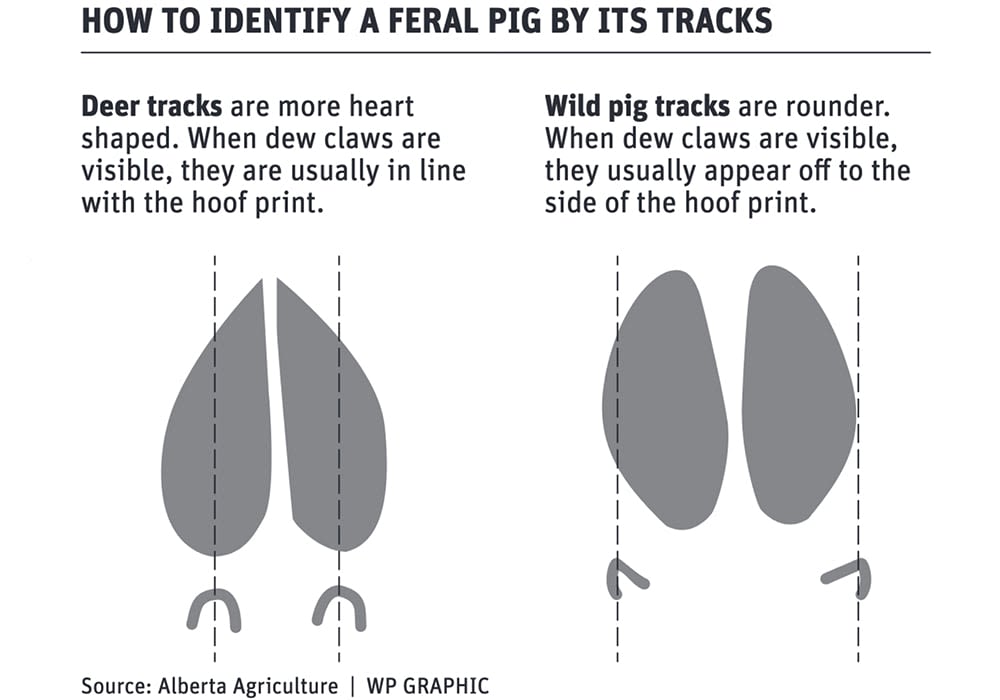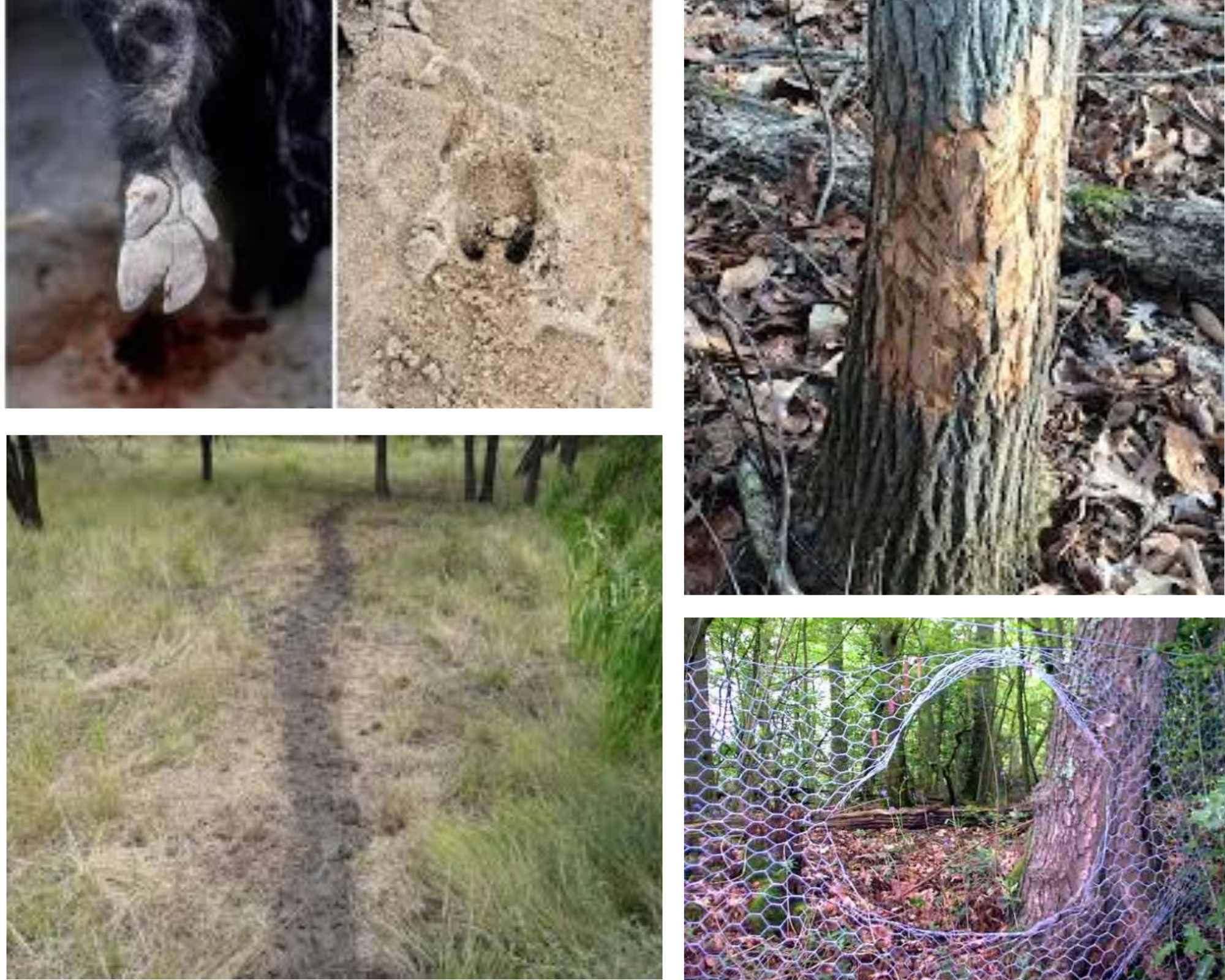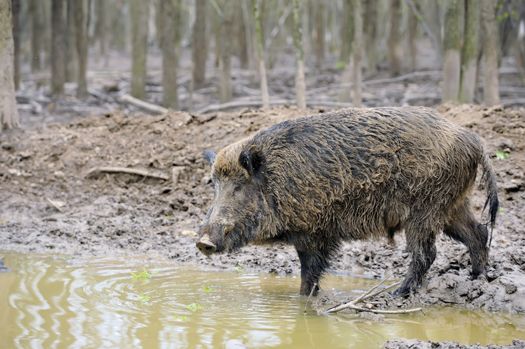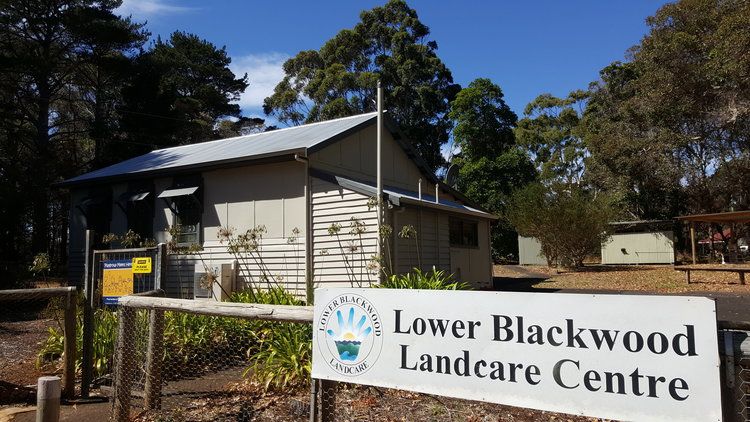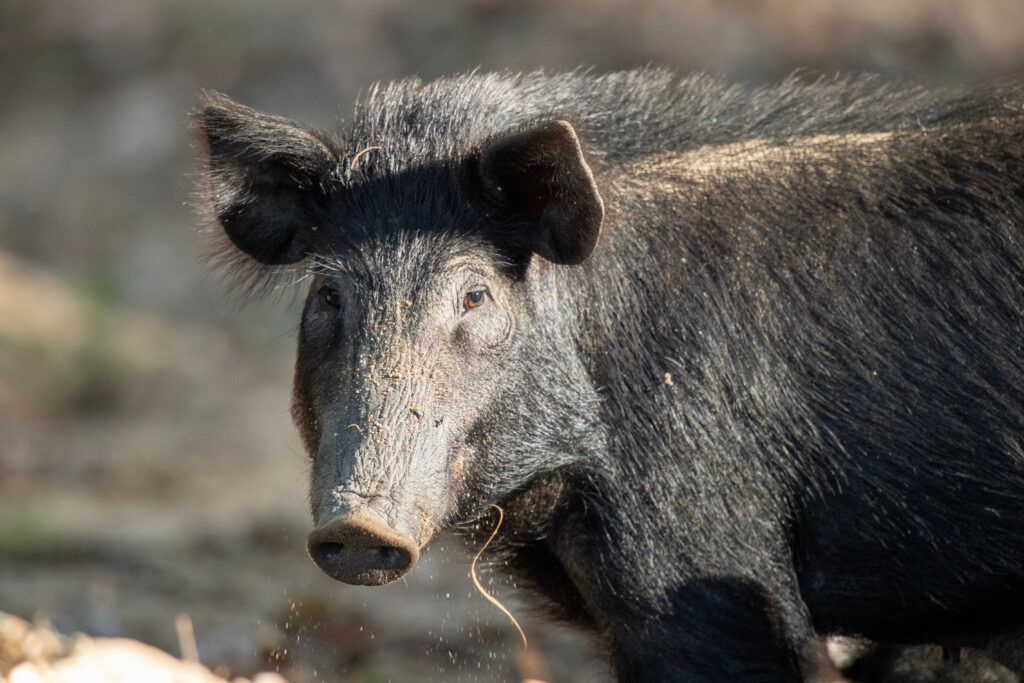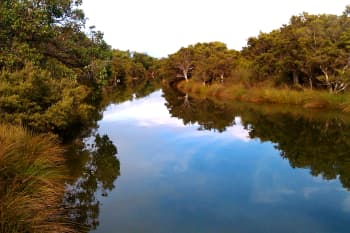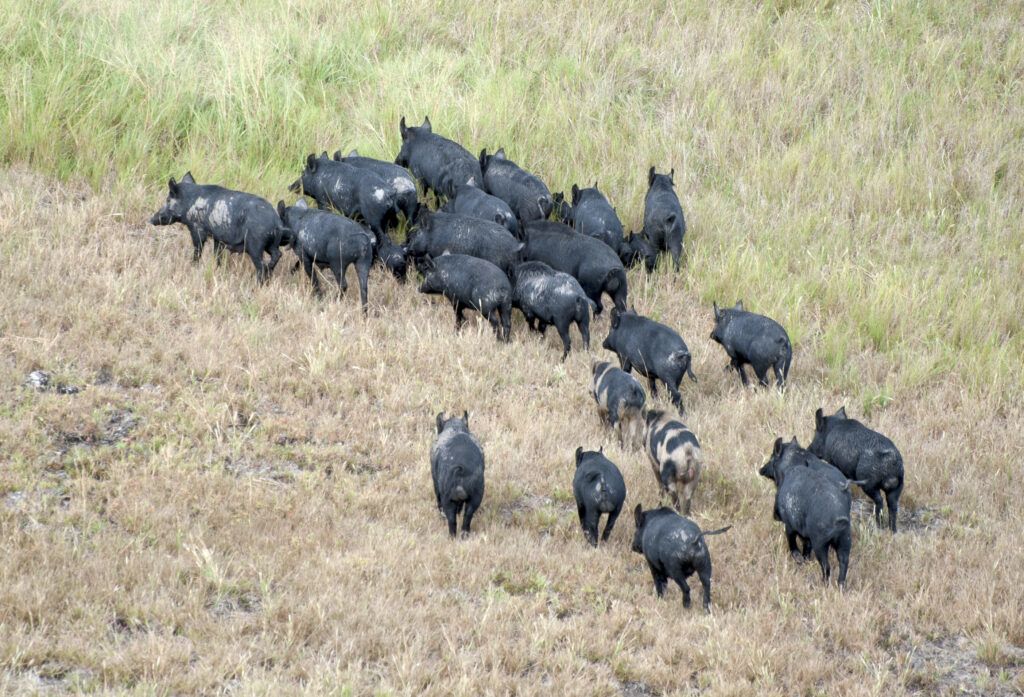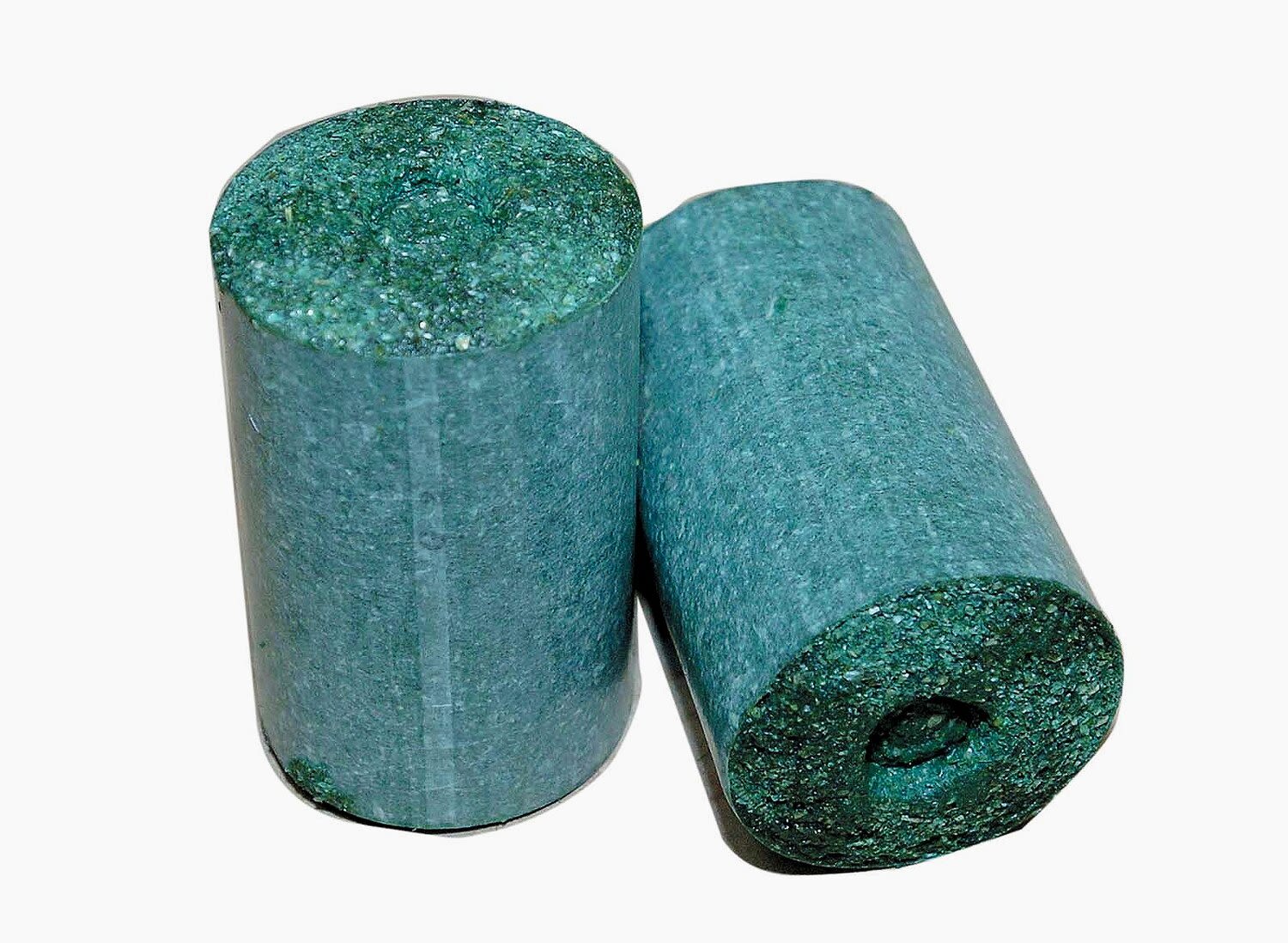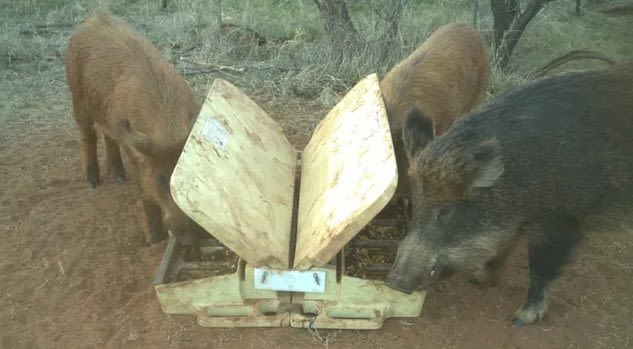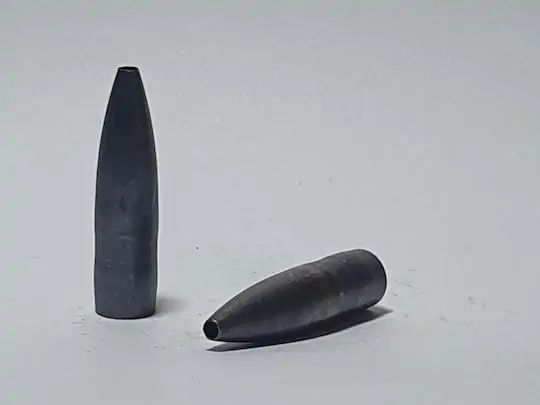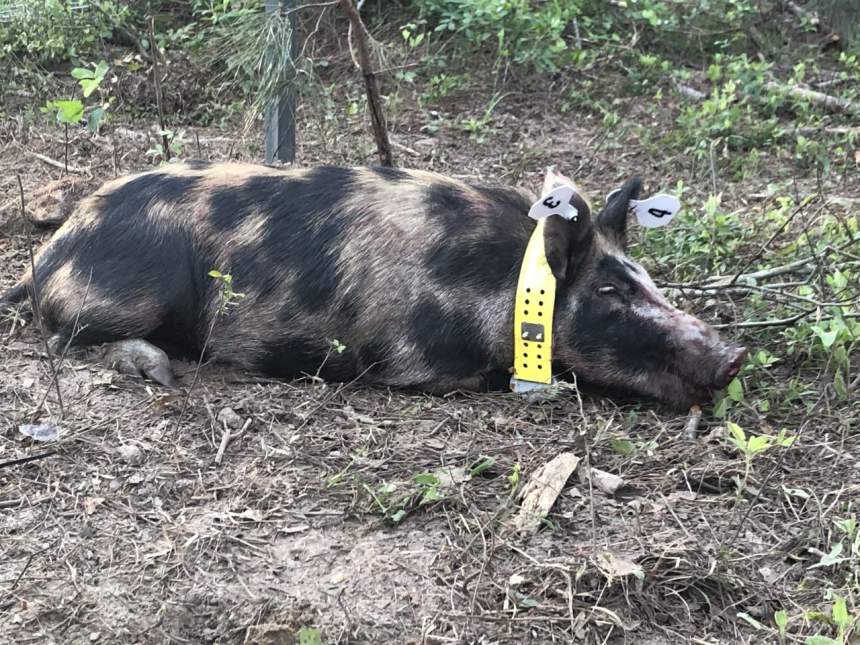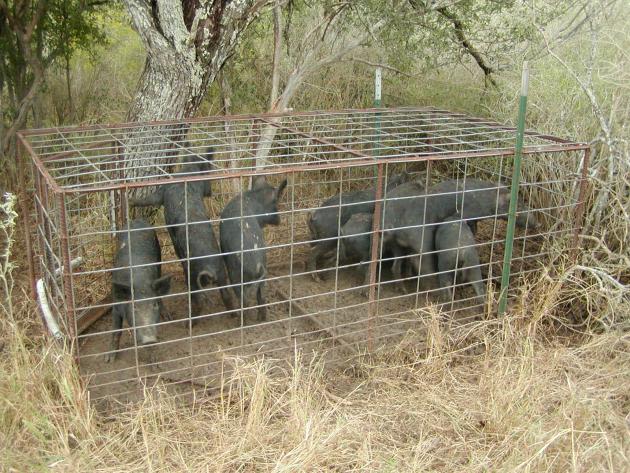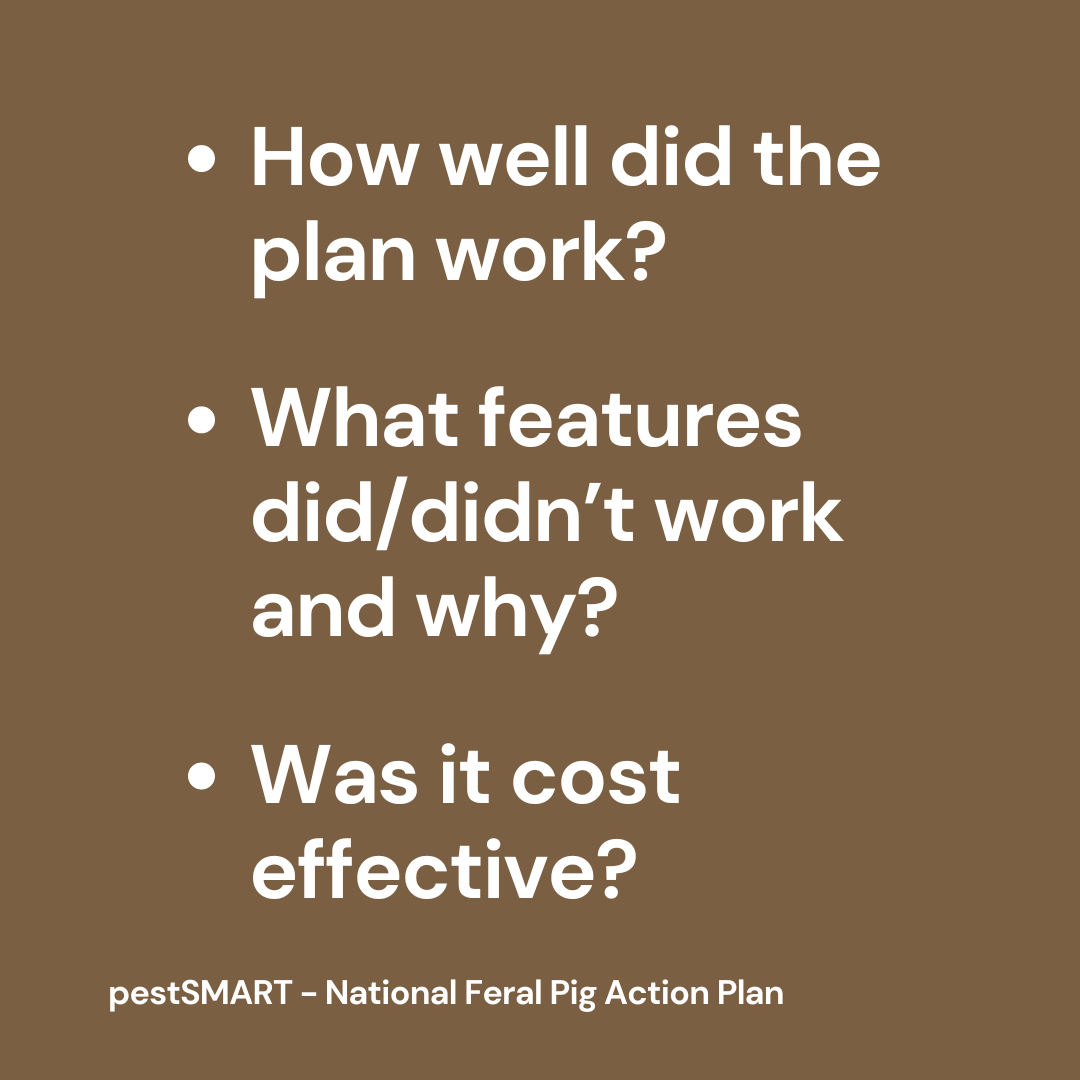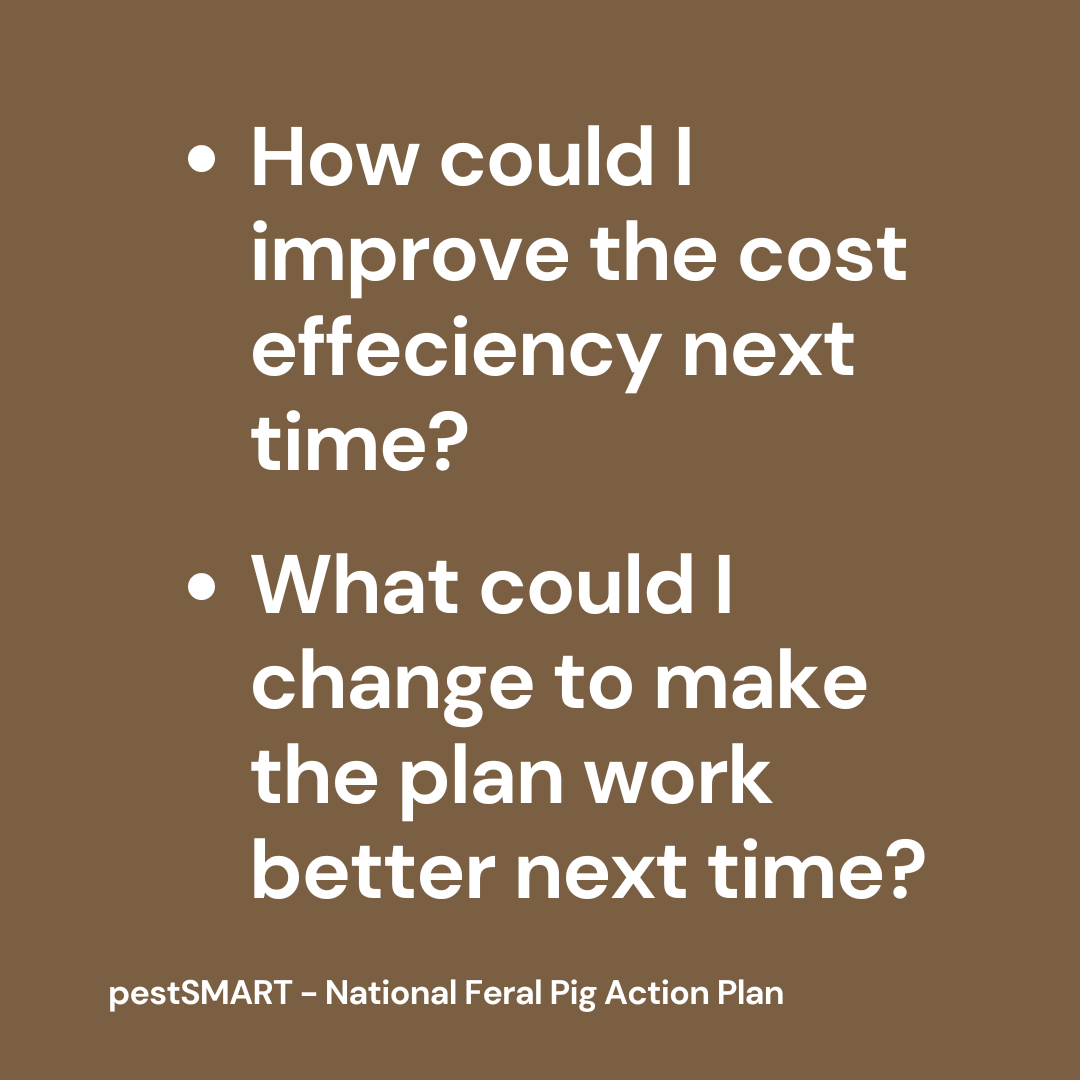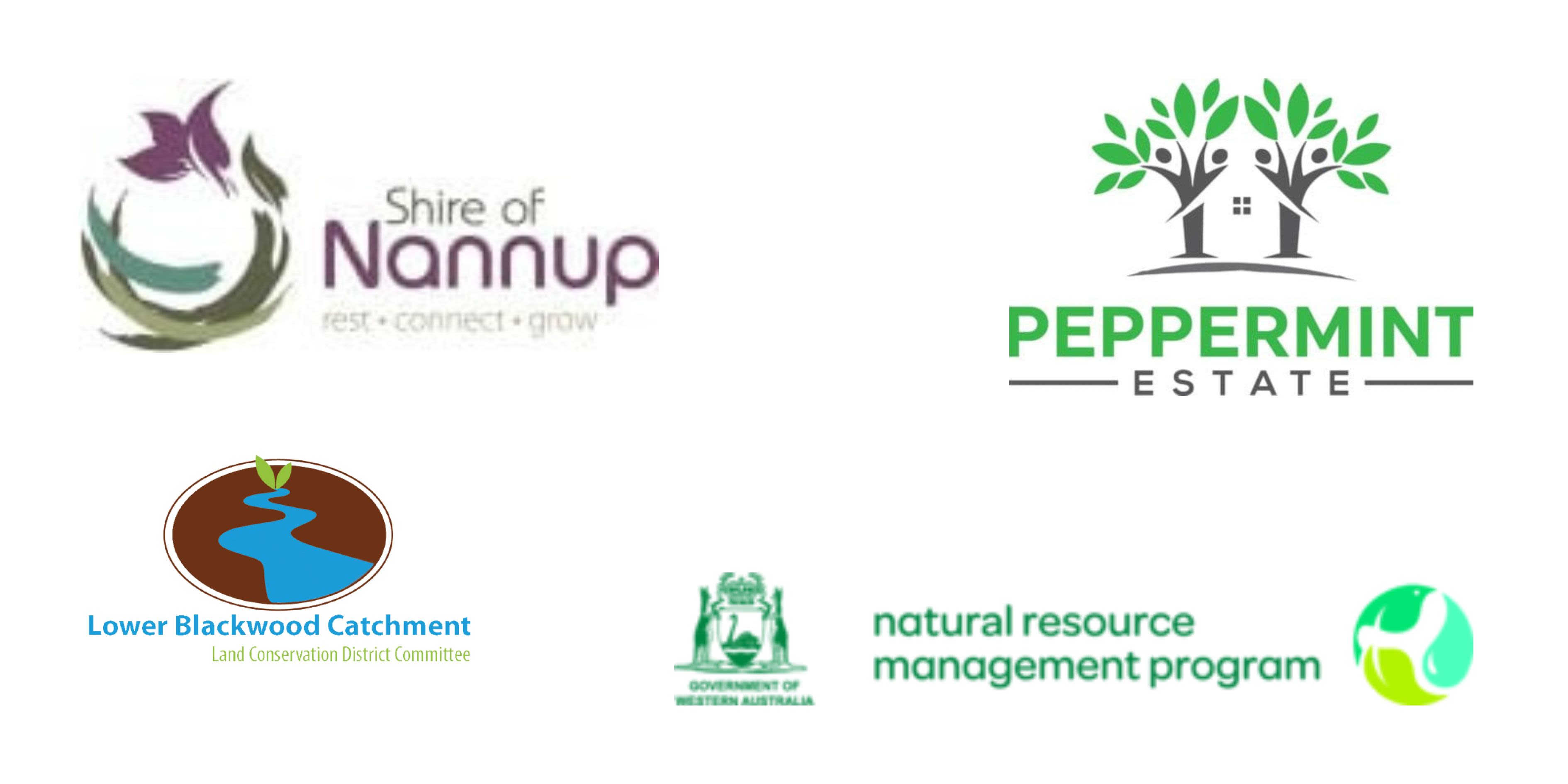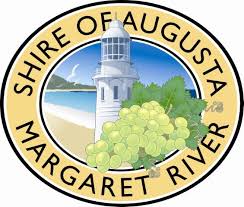The Lower Blackwood LCDC
Guide to Managing Feral Pigs
In the Scott Coastal Plain
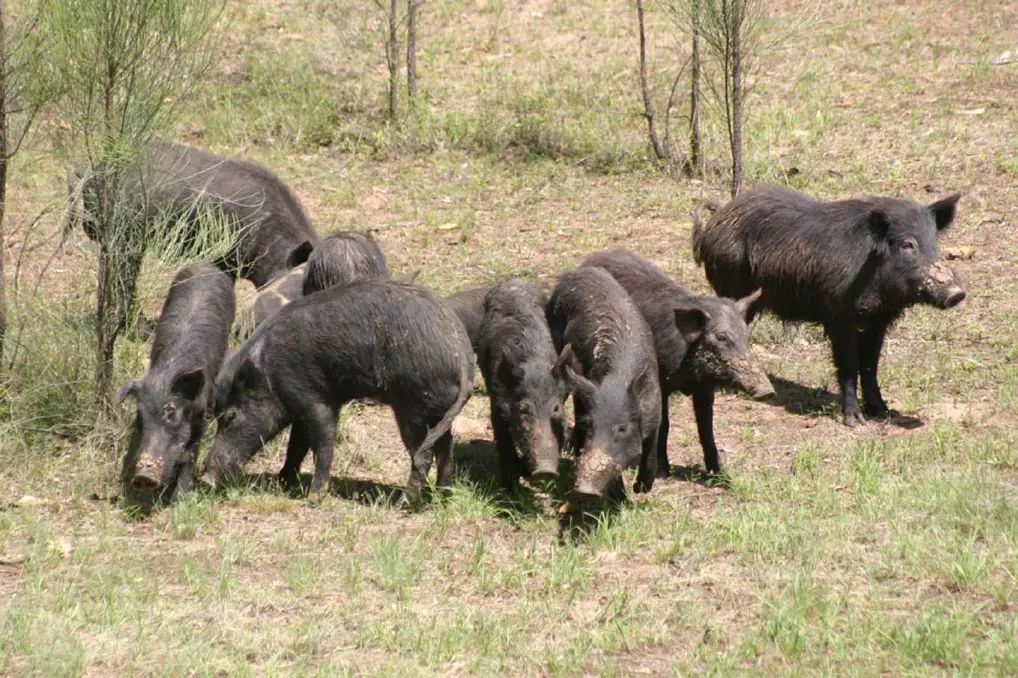
Learn
A large part of managing the feral pig problem is dependent on the Landholder's awareness of the problem.
This Landholder Guide aims to provide:
- More knowledge into the pigs' biology and ecology and where and how they live.
- Ways you can assess the problem on your land and develop a management plan.
- Options for monitoring and control techniques.
- Evaluation methods for your plan so you can modify and repeat as necessary.
Feral pigs originally come from escaped and released domestic pigs. Feral pigs in the Scott River look very similar to domestic pigs.
As a results of a diverse population source and interbreeding, feral pigs vary in colour and size. Feral Pigs in the Scott River are generally black, but can also be spotted.
Feral sows and piglets live in large groups lead by a dominant sow. These groups can very in size depending on the seasons and geographical area.
Younger males and old boars are generally solitary.
Water is a key factor on their habitat. Feral pigs don't have sweat glands, so they always live close to a water courses or floodplains. This increases availability to feed and vegetation cover.
Breeding can occur at any point in the year, particularly given the quality of food available. Sows reach sexual maturity at around 6 months of age (25kg) and produce at least 2 weaned litters every 12-15 months. These litters can very in size from 4-10 piglets.
Feral pigs can live for more than 5 years. Although, the mortality rate for piglets is generally high.
The actual population of feral pigs in Australia isn't known. Although, their distribution across Australia is growing. In 2019 the feral pig population was estimated to be 3.2 million.
Feral pigs are nocturnal and generally only move in a 9km2 radius, their "home range". This does vary with feed and shelter availability.
Solitary adult boars have larger "home ranges" than females and groups.
Feral Pigs in The Scott Coastal Plain
The Scott Coastal Plain contains several areas of remote, permanent wetlands which remain inaccessible throughout the year. This creates pockets where feral pigs can breed undisturbed with water and food sources close by.
The Scott Coastal Plain is a large geographical area that has a small population. Different management strategies used by Farmers, State Forest and Parks, and Plantations posed a challenge for the Lower Blackwood Vertebrate Pest Management Group (LBVPMG) to coordinate efforts. But through the three years of the project, we have made significant progress.
Spring and Winter
The wet winters cause extreme inaccessibility in the majority of the Plain, creating inaccessibility and limiting year-round control methods.
Summer and Autumn
An Autumn germination post dry summers can create a sudden spike in perceived activity, even though the pigs were present prior but undetected by landholders and managers. The undetected presence of feral pigs during the summer can create a "roadblock" of monitoring of feral pigs from the community.
Challenges
Pigs have access to good food year-round in the South West. This means that high value baits are needed to entice the pigs into traps or to eat from baits. Our LBVPMG has taken to using apples.
Feral pigs have a natural 'ebb and flow' of their habitat throughout the seasons. Retreating to permanent water sources during the dry season and moving to higher ground during the wet season.
Unauthorised access to both private and state managed land is frequent and recreational feral pig hunters are common. Both of these hamper control strategies put in place and can cause the pigs to be disturbed and 'trap-shy'.

Impacts of Feral Pigs
In Australia, 148 species of threatened flora and fauna and 8 threatened ecological communities are adversely threatened by feral pigs. Feral Pigs cause more than $100 million AUD in Agricultural damages a year.
- Crop and pasture destruction
- Land and habitat degradation
- Transmission of infectious diseases
- Spreading of weeds
- Erosion and sediment run-off
- Contamination of water
- Damage to water sources
- Damage to culturally important sites and cultural values
- Competition for feed for livestock production and/or native wildlife
- Predation of livestock
- Damage to infrastructure
- Biodiversity loss
- Native habitat degradation

Dangers of Feral Pigs
Feral pigs can be aggressive, particularly females that are protecting their young.
They can use their large tusks to protect themselves. These tusks can cause significant wounds in humans and other animals.
The main danger feral pigs pose is the zoonotic diseases they carry and transmit.
These diseases include:
- Foot and Mount Disease (Livestock Disease)
- African Swine Fever (Livestock Disease)
- Classical Swine Fever (Livestock Disease)
- Porcine Reproductive and Respiratory Syndrome (PRRS) (Livestock Disease)
- Porcine Epidemic Diarrhoea Virus (Livestock Disease)
- Aujesky's Disease (Livestock Disease)
- Leptospirosis (Livestock and Public Health Disease)
- Brucellosis (Livestock and Public Health Disease)
- Japanese Encephalitis Virus (Livestock and Public Health Disease)
- Q Fever (Livestock and Public Health Disease)
- Melioidosis (Livestock and Public Health Disease)
- Erysipelas (Livestock and Public Health Disease)
- Sparganosis (Livestock and Public Health Disease)
Through their movements, feral pigs also cause the transmission of:
- Panama Disease Tropical Race 4 - affects bananas
- Phytophthora cinnamomi - causes dieback in native trees, plants and horticultural crops

Plan
Define, Set and Develop

Identifying Feral Pig Tracks vs Dee Tracks
Identifying Feral Pig Tracks vs Dee Tracks
Feral Pig: Nests, Wallows, Rooting and Crop Damage
Feral Pig: Nests, Wallows, Rooting and Crop Damage
Feral Pig: Tracks, Tusking/Rubbing, Track Pads, and Holes in Fences
Feral Pig: Tracks, Tusking/Rubbing, Track Pads, and Holes in Fences
Define the Problem
Structured management processes that are consistent and integrated to achieve long term and cost effective outcomes.
Detecting the pig presence is the first step to planning the management of feral pigs.
Indications of pigs in the area are:
- Tracks
- Rooting
- Wallows
- Nests or beds
- Travel pads
- Dung
- Holes in fences
- Crop damage
- Tusking
- Tree and post rubbing
It is important to correctly identify the tracks. Pigs have four toes, but only the middle two have well-developed hooves so only those two are prominent in tracks. Their deft claws can be seen in soft ground.
The track of a feral pig is more square in shape when compared to deer/goat/sheep which are more heart shaped.
Measuring the impact of feral pigs on your property, and match your level of management.
The presence of pigs doesn't always mean the problem is significant enough to bring in control methods. The cost of control can sometimes be greater than the cost of repairs.
It is VERY important to take into consideration the 'hidden' costs of feral pigs' presence. These are things like disease risk, ecology and native flora and fauna threats.
Set Objectives
Eradication is the best-case-scenario, but on a larger scale is not achievable. Realistic goals in an achievable time-frame will help maintain a good structure to your control and help keep costs to a minimum.
Aim to reduce the impacts of feral pigs rather than the number of feral pigs.
The prevalence of pigs doesn't always correlate with the extent of the damage, so reducing the pigs numbers as a whole may not help the impacts imposed on your property/production system.
Control is a more cost effective way to manage feral pigs when eradication isn't achievable, this can be as simple as a one-off control (fencing), sustained control (initial reduction followed by maintenance of numbers), or targeted control (control at times when damage in most severe).
"Feral pig control should be proactive and aimed at reducing damage rather than eradicating pigs altogether."
Developing a Plan
Feral Pig wallowing in a waterhole
Feral Pig wallowing in a waterhole
Working with Ecology and Behaviour
Understanding the biology and behavioural traits of feral pigs is integral. Food, water, and shelter are the main factors.
Setting baits when it's dry will increase their effectiveness. Feral pigs tend to congregate around permanent water points and are more likely to eat baits when food sources are scarce.
It is harder to undertake sustained control methods during colder and wetter conditions as they require more time and effort when the pigs are more mobile.
Lower Blackwood LCDC Office
Lower Blackwood LCDC Office
Working with People
Working alongside neighbours and local land-care groups over your region can help increase the success of feral pest control.
Individual control in a small area is unlikely to have a lasting effect on the greater impact of feral pigs.
Group and cooperative efforts are more likely to produce a more cost effective and sustainable environmental and social result that can be maintained as a long-term control effort.
Feral Pig from South Western Australia
Feral Pig from South Western Australia
Objectives and Measuring Success -
Monitoring before beginning a new form of control is important to measure the success of a type of control.
Operational monitoring; recording what was done, when and at what cost is necessary to measure whether what was done was worth the cost of resources.
Performance monitoring help assess the effectiveness of a control methods based on your set objectives. It's not based on visual sightings of pigs but rather the signs and damage of feral pigs.
Working with The Lower Blackwood LCDC and LBVPMG
Working with the Lower Blackwood LCDC and LBVPMG is a good way of getting started on managing the feral pigs in your area.
We are able to provide:
- Monitoring and collation of public records when you send the information to us - this is helpful to establish a starting point and also to assess if the control methods you are using are working
- Seasonal trapping program by trained and licensed experienced professionals who have an excellent understanding of the local landscape and have great relationships with the local community and land managers
- Tenure blind and coordinated approach to feral pig control in the area
- Targeted response to community reporting’s and information
- Cooperation with landholders to assist or collaborate in control efforts
- Long term monitoring and data driven evaluation of control actions and management success
You can learn more about how we can help on our project page

Manage
Choosing Suitable Control Tools
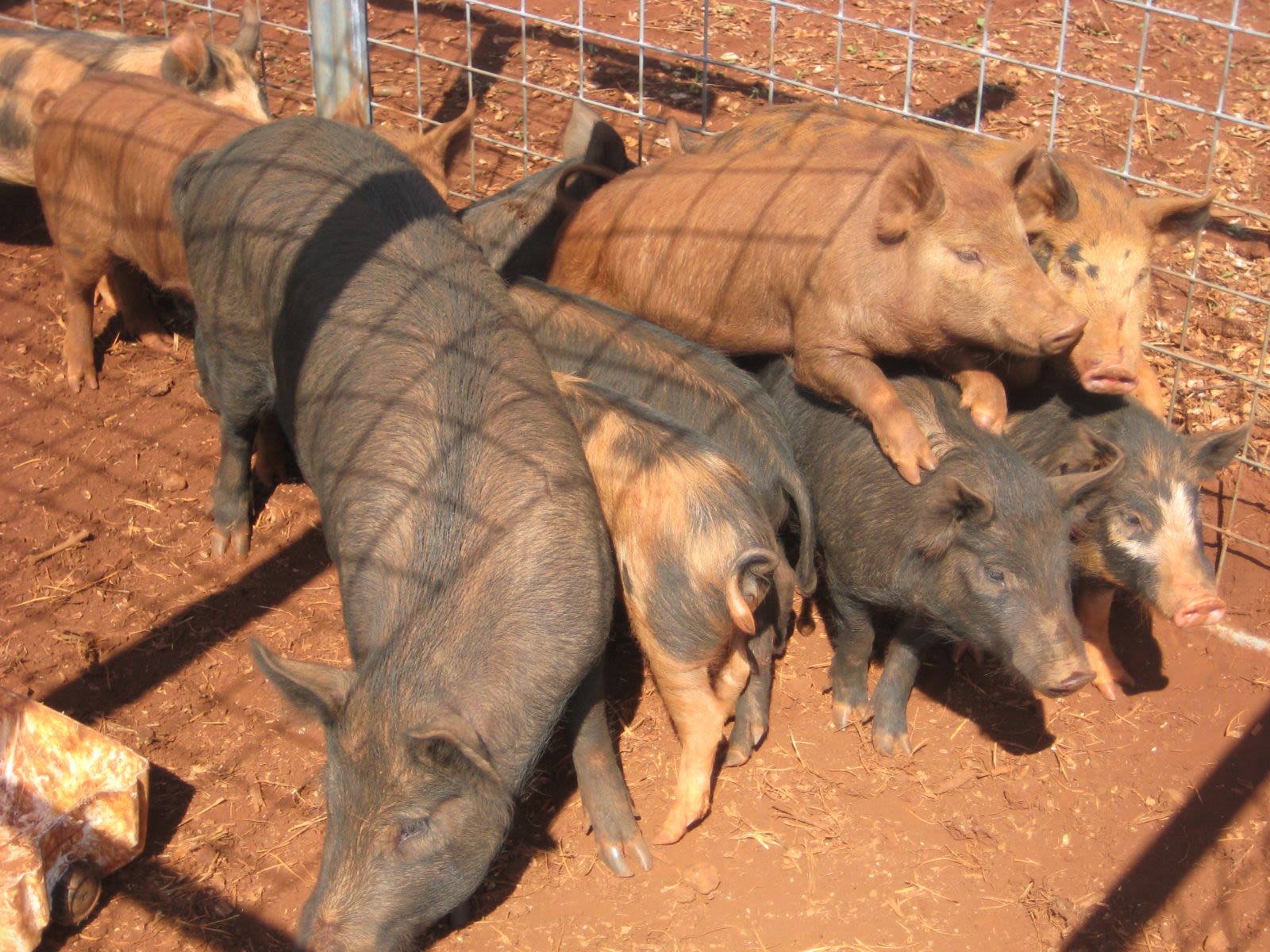
Management Strategies
Maintaining Observation
Maintain observance of feral pig activity, feral pig damage, and/or unauthorised access of your land.
Assisting our team with sightings of feral pigs in the area increases the awareness of the issue and allows us to work collaboratively with landholders.
You can report your findings/sightings to our team here:
Poison Baiting (1080)
1080 (sodium fluoroacetate) is the main toxin currently used in Australia and is the only one allowed for aerial application
1080 baits are used just before breeding events or when other feed isn't readily available.
Poison baiting is seen as one of the most economically effective ways to control feral pests and can have a large impact on the population in a short time period.
There are restrictions on using 1080 and approval processes and qualifications need to be achieved to use it. It can also pose a risk to other non-targeted animals.
Poison Baiting (Sodium Nitrate)
Sodium Nitrate (NaNO3) baits are also most effective in drier periods when other food is limited.
It is a very fast acting poison and pigs usually succumb withing 1-3 hours of ingestion. In most cases, pigs are found within 300m of the bait site with very little signs of distress.
NaNO3 baits can only be used in conjunction with a "Hog Hopper" bait delivery system which is an extra cost.
The approval system also requires qualifications for use.
There is no current Humane Pest Animal Control National Standard Operating Procedures (NATSOPs) for Sodium Nitrate Poisoning with Feral Pigs.
Shooting -
Monitoring before beginning a new form of control is important to measure the success of a type of control.
Operational monitoring; recording what was done, when and at what cost is necessary to measure whether what was done was worth the cost of resources.
Performance monitoring help assess the effectiveness of a control methods based on your set objectives. It's not based on visual sightings of pigs but rather the signs and damage of feral pigs.
Exclusion Fencing
Fences are constructed around an area that the feral pigs have not yet entered. It doesn't impact the population of feral pigs.
Exclusion fencing is a humane, non-targeted control method that yields effective results in small high-value cropping areas. It's not practical to do on a larger scale due to the necessary resources.
The fences do require frequent maintenance as feral pigs can break through most fencing types. It is also not a targeted control method so it can have an adverse effect on livestock.
There is no current Humane Pest Animal Control National Standard Operating Procedures (NATSOPs) for Exclusion Fencing with Feral Pigs.
Judas Pigs
Judas pigs is ground and aerial shooting using a 'Judas' collar pig to find their location. They are used as the last step in feral pig control when the pig population is low.
It helps eliminate the remaining population of pigs following other control methods, such as baiting.
It is a time and cost expensive operation and has variable effectiveness. As the sows are generally chosen as the Judas pig, because they're more socially connected, it tends to miss the adult boars which are solitary animals.
Trapping
Trapping is used when poison baiting isn't feasible but when food is limited.
Trapping is highly specific and freely available for commercial use. It's very target specific, relatively humane and allows for the reuse of the trap.
Trapping is labour intensive and not practical in large-scale areas.
The traps to require access to traps and bait materials and even then there are some pigs that are 'trap-shy' and while avoid traps.
Improve
Evaluating your plans
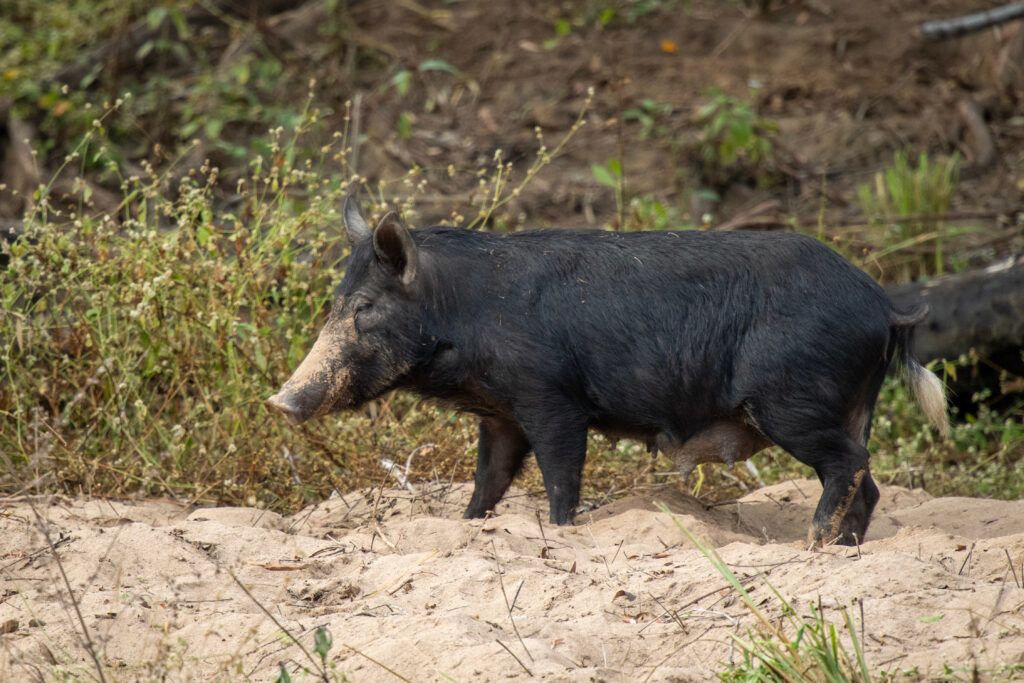
Evaluating
Evaluating your plan at the end of a season or year is integral to assess whether your plan has achieved the goals you wanted.
Once you have evaluated your plan you are able to modify it to better suit your goals for the next season. You can repeat this process as many times as you want or until you are happy with the outcome of your plan.
It is likely that you will need to modify your plan yearly to suit the different seasonal changes.
If you would like help assessing your plan, you can contact The Lower Blackwood LCDC or your local biosecurity officer.
Legislation on Controlling Feral Pigs
Agriculture and Related Resources Protection Act 1976
Animal Welfare Act 2002
Biosecurity and Agricultural Management Act 2007
This project is supported through funding from the Shire of Nannup, Peppermint Estate Pty Ltd., and the State Natural Resource Management Program, and is facilitated through a continuing partnership with the Lower Blackwood LCDC the Lower Blackwood Vertebrate Pest Management Group.
In addition the Augusta Margaret River Shire, through it’s Environmental Management Fund, has provided support for a 1 year pilot Feral Pig Focus project to complement the Scott River Project for Feral Pig Control in the wider AMR shire.


